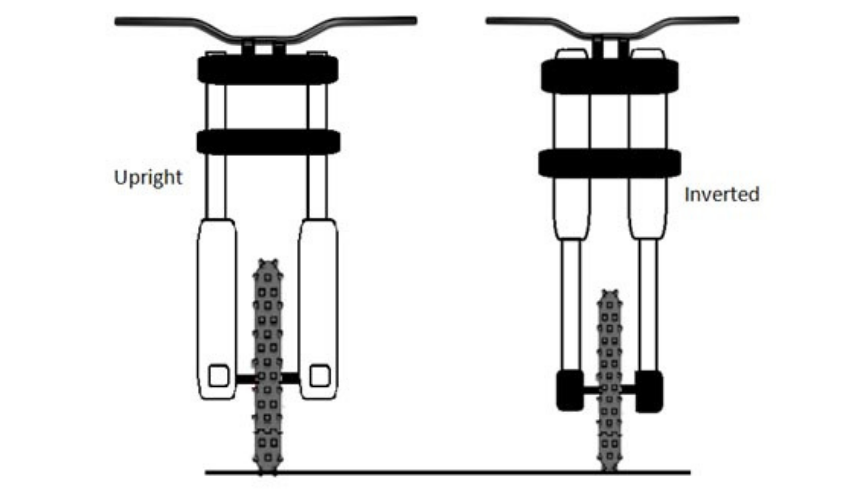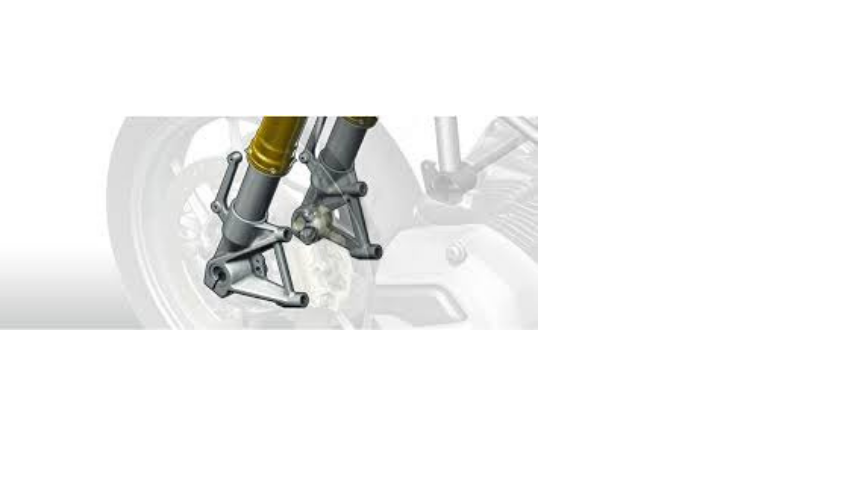
USD fork vs Telescopic Fork
"Choose wisely!"
Have you ever asked why some bikes have traditional telescopic forks and others get upside down forks? Let's get the discrepancies out of the way, first and foremost. A fork consists of a spring and an internal damping unit. The springs serve as a compression unit here, while the dampers control its velocity with the help of oil. In essence, there are almost equal operating elements for both telescopic forks and USD forks. Despite this, over the former, the latter gets more priority. The root of USD forks goes back to the late 1980s when the fork was flipped upside down by racing teams to boost handling.

Does repositioning a fork, though, actually make a world of a difference? Well, it's not! Really, it just comes down to how rigid one is from the other. The fork, which acts as a lever, undergoes some extreme stress while braking or spinning, especially the portion under the triple clamp or yoke. To elaborate, it's the front wheel that comes to a halt as you apply the front brake. On the other side, the whole mass of the bike just comes to a standstill because it is bound to the fork that carries the wheel.
The chrome element (stanchion) is mounted at the top of a telescopic fork and held together by a triple clamp while the slider (female portion) sits at the bottom. Switch over the whole assembly and you have an upside-down fork, where the top slider lies, braced by the triple clamp, and below is the stanchion. Needless to mention, it is important to be strong in the portion that undergoes most tension, and the best solution is a fatter diameter fork. A USD fork in this Scenario fits perfectly well. The slider now attaches to the triple clamp as the fork assembly is effectively flipped upside down. Compared to traditional telescopic forks, it is longer too. It offers more resources as a result. Under heavy braking or turning speeds, it's much less likely to flex. Bikes with USD forks manage easier and get better reviews, thanks to this.

In comparison, damping cartridges on USDs are marginally stronger since the damping or spring action is less progressive than the damping rod used on telescopic forks. In terms of a fully customizable USD fork that uses more complicated internal components, the distinction goes much further. This helps the rider to adjust compression, rebound, and damping to accommodate his/her style of riding by tinkering with the adjuster mounted on top.
It does have its disadvantages, though, as USD forks are much more difficult to deal with and it is a chore to disassemble them. On the opposite, because of their simple construction, traditional telescopic forks are simpler to deal with, be it replacing the oil seals or simply pulling them all apart.

Another bonus of making telescopic forks is that, as it is higher up, the slider remains free from all the mud and grime flung from the wheels. It's the complete reverse, however, in the case of USD forks. The oil is therefore likely to trickle into your brake components in the event of an oil seal leak on a USD fork, which is highly dangerous.
Also Read:
THE NEW BS6 COMPLIANT HONDA CB SHINE SP 125
NEW UPCOMING BIKES IN NEPAL 2020
FORD BOOKING OPEN FOR 2020 FORD BS-6 MODELS IN NEPAL
THE BEST OFF-ROAD BIKES IN NEPAL
TIPS FOR TAKING CARE OF YOUR MICROWAVE OVEN









